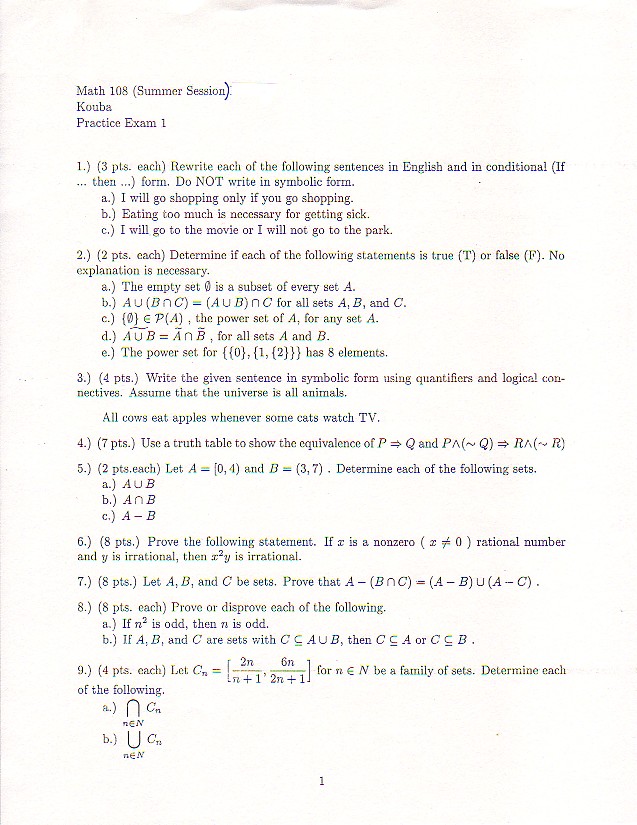Transition To Advanced Mathematics Solutions Manual
A Transition to Advanced Mathematics 5th ed. By Douglas Smith, Maurice Eggen solution manual Showing 1-1 of 1 messages.

Description Mathematical Proofs: A Transition to Advanced Mathematics, Third Edition, prepares students for the more abstract mathematics courses that follow calculus. Appropriate for self-study or for use in the classroom, this text introduces students to proof techniques, analyzing proofs, and writing proofs of their own. Written in a clear, conversational style, this book provides a solid introduction to such topics as relations, functions, and cardinalities of sets, as well as the theoretical aspects of fields such as number theory, abstract algebra, and group theory. It is also a great reference text that students can look back to when writing or reading proofs in their more advanced courses. Proof Strategies encourage students to plan what is needed to present a proof of the result in question. Proof Analysis segments appear after presentations of proofs and discuss key details considered for the creation of each proof. Chapter 0, Communicating Mathematics provides a valuable reference for students as the course progresses.
This chapter prepares students to write effective and clear exposition by emphasizing the correct usage of mathematical symbols, mathematical expressions, and key mathematical terminology. Early introduction of Sets (Chapter 1) prepares students for the coverage of logic that follows. Early introduction of Logic (Chapter 2) presents the needed prerequisites to get into proofs as quickly as possible. Much of the chapter’s emphasis is on statements, implications, and an introduction to qualified statements. Proof by Contradiction receives an entire chapter, with sections covering counterexamples, existence proofs, and uniqueness.
A wide variety of exercises is provided in the text. Difficulty ranges from routine to medium to moderately challenging. True/False exercises present statements and ask students to determine whether they are correct, asking for justification as part of the process.
Transition To Advanced Mathematics
Proposed proofs of statements ask students if an argument is valid. Proofs without a statement ask students to supply a statement of what has been proved. Finally, there are exercises that call upon students to ask questions of their own and to provide answers.
New Exercises: More than 250 exercises have been added, including many challenging exercises at the end of exercise sets. New exercises include some dealing with making conjectures to give students practice with this important aspect of advanced mathematics. New and Revised Examples: Examples have been added and heavily revised with new proofs, adding support for the material to give students better understanding and helping them to solve new exercises. Additional sections: Chapter 13 has been expanded to include coverage of cosets and Lagrange’s theorem. The important topic of quantified statements is now introduced in Section 2.10 and reviewed in Section 7.2 in reinforce the student’s understanding.
Gary Chartrand is Professor Emeritus of Mathematics at Western Michigan University. He received his Ph.D. In mathematics from Michigan State University. His research is in the area of graph theory. Professor Chartrand has authored or co-authored more than 275 research papers and a number of textbooks in discrete mathematics and graph theory as well as the textbook on mathematical proofs. He has given over 100 lectures at regional, national and international conferences and has been a co-director of many conferences.
He has supervised 22 doctoral students and numerous undergraduate research projects and has taught a wide range of subjects in undergraduate and graduate mathematics. He is the recipient of the University Distinguished Faculty Scholar Award and the Alumni Association Teaching Award from Western Michigan University and the Distinguished Faculty Award from the State of Michigan.
He was the first managing editor of the Journal of Graph Theory. He is a member of the Institute of Combinatorics and Its Applications, the American Mathematical Society, the Mathematical Association of America and the editorial boards of the Journal of Graph Theory and Discrete Mathematics. Polimeni is an Emeritus Professor of Mathematics at the State University of New York at Fredonia. He received his Ph.D.

Degree in mathematics from Michigan State University. During his tenure at Fredonia he taught a full range of undergraduate courses in mathematics and graduate mathematics. In addition to the textbook on mathematical proofs, he co-authored a textbook in discrete mathematics. His research interests are in the area of finite group theory and graph theory, having published several papers in both areas. He has given addresses in mathematics to regional, national and international conferences.
He served as chairperson of the Department of Mathematics for nine years. Ping Zhang is Professor of Mathematics at Western Michigan University. She received her Ph.D.
In mathematics from Michigan State University. Her research is in the area of graph theory and algebraic combinatorics. Professor Zhang has authored or co-authored more than 200 research papers and four textbooks in discrete mathematics and graph theory as well as the textbook on mathematical proofs.
She serves as an editor for a series of books on special topics in mathematics. She has supervised 7 doctoral students and has taught a wide variety of undergraduate and graduate mathematics courses including courses on introduction to research.

She has given over 60 lectures at regional, national and international conferences. She is a council member of the Institute of Combinatorics and Its Applications and a member of the American Mathematical Society and the Association of Women in Mathematics.
What Is Advanced Mathematics
ISBN: 023 / Author: Douglas Smith Maurice Eggen Richard St. Report this ad CHEAT SHEET SLADER FASTER evens odds evens odds BEAMING IN YOUR CHEAT SHEET JUST A SEC Can you find your fundamental truth using Slader as a completely free A Transition to Advanced Mathematics solutions manual? Now is the time to redefine your true self using Slader’s free A Transition to Advanced Mathematics answers. Shed the societal and cultural narratives holding you back and let free step-by-step A Transition to Advanced Mathematics textbook solutions reorient your old paradigms.
NOW is the time to make today the first day of the rest of your life. Unlock your A Transition to Advanced Mathematics PDF (Profound Dynamic Fulfillment) today. YOU are the protagonist of your own life. Let Slader cultivate you that you are meant to be!